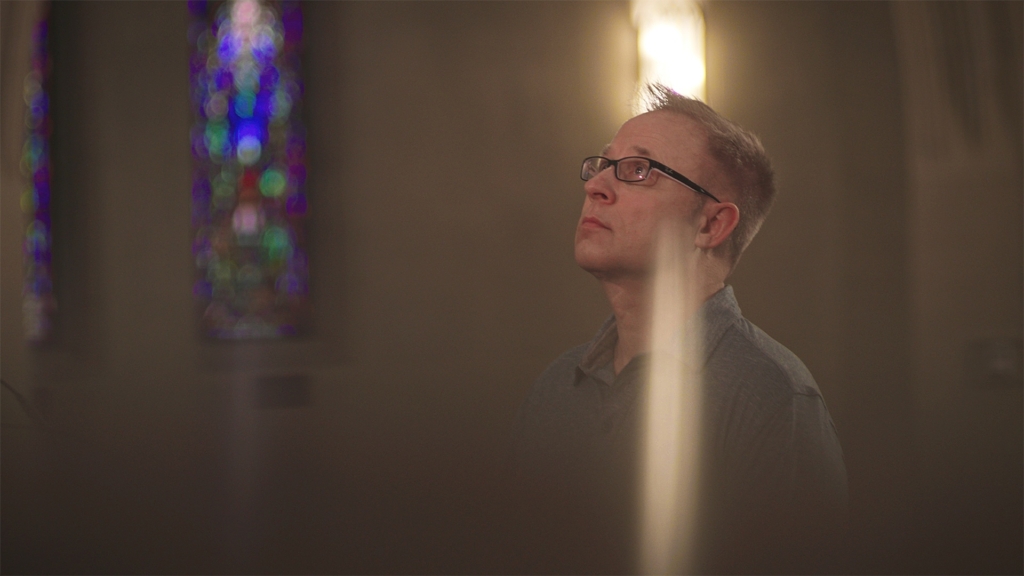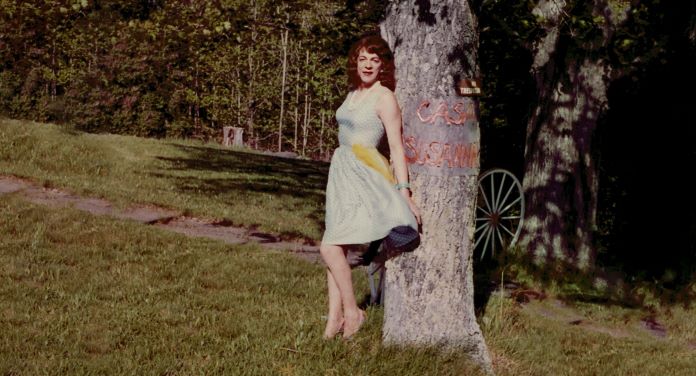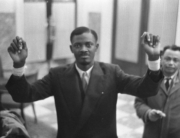Viewers can overload on the huge number of documentaries offered in the annual DOC NYC showcase, in-person and online. The festival opened on November 9 at venues in Greenwich Village and Chelsea, and it’s among the festivals that have smartly changed with the post-pandemic times, sharing their riches with streaming viewers across the country.
But what to focus on? A little bit of this, a little bit of that? Well, three films offer fascinating looks at recent times or, in one documentary, a bit of the ancient past. The trio could easily be lumped together as a mini-LGBTQ+ festival, though that may erroneously imply a narrow appeal, which is not the case. In fact, two of three won top festival prizes, an indication of a broader interest.
The winner of the festival’s Audience Award is also the most eye-opening of the three, the insightful 1946: The Mistranslation That Shifted Culture. In that titular year, for the first time in an English translation of the Bible, the word homosexual appeared in the Revised Standard Version, which was edited by a committee of 22 contributors. The term was based on two ancient Greek words.
Director Sharon “Rocky” Roggio delves into the fascinating work of etymology. Unraveling the mystery of how the RSV editors made their decision, Roggio follows an evangelical Christian turned Biblical scholar, Kathy Baldock, and Ed Oxford, Master of Divinity (who has a collection of Bibles that go back to 1522), and traces their steps to Yale University, where the editorial notes for the 1946 edition are archived. While viewing rolls of microfilm, the sleuths uncover a game-changing revelation: A letter to the editors from an unknown, young Canadian seminarian politely pointed out how the RSV got it wrong: The Greek terms in question were misconstrued. The text was not condemning homosexuality.
But would a correction be too little, too late? Since the 1970s, there have been a plethora of editions of the Bible, and not all the various editors took notice of the RSV’s rephrasing in its 1969 edition. Regarding the Old Testament, Roggio turns to Rabbi Steve Greenberg of Yeshiva University to walk viewers through the ancient Hebrew world of Leviticus.
Paralleling the scholarly and accessible investigation is the director’s personal history, which becomes as compelling a narrative line as the contextual conundrum. Roggio was brought up in a nondenominational evangelical church led by her minister father, Salvatore, who has not accepted her homosexuality. In fact, when Baldock presents her research at a Los Angeles church, he politely rejects her conclusions, presumably as a staunch fundamentalist. Although he doesn’t quite say it, his philosophy comes down to, “love the sinner; hate the sin.”
Although the father and his supernaturally patient daughter have strong disagreements, to put it mildly, they nevertheless respect each other and debate without rancor. Who needs urban pop star Gwen Stefani and Oklahoman country singer Blake Shelton as aspirational figures to bridge the country’s cultural divide? (Thanks, Bill Maher, for the reference.)
Valerie Kontakos’s beguiling Queen of the Deuce takes us back to the Times Square of the 1970s, with rising crime, inflation, and a porn theater on every block. However, the title slightly misleads. It really focuses on the roller-coaster life of Chelly Wilson, a Greek Jew who left Athens shortly before World War II broke out, escaping the Holocaust. She became an entrepreneur in New York City, leading her to buy up theaters that would screen exclusively gay porn. She also produced straight porn—softcore and then hardcore—and had her own distribution company, which her younger daughter, Bondi Walters, ran—Bondi was also tried and acquitted for obscenity in New Orleans for Illusions of a Lady. (She and her husband, Don Walter, are among the documentary’s executive producers.)
Granddaughter Dina Pomeranz did not think it was at all unusual to spend Thanksgiving with her grandma in the apartment above a gay porn theater (Eros I) where Chelly ruled the roost, “like a Mafia Queen” over a “cabal of Greek witches,” according to grandson David Bourla, with bags stuffed with cash in her living room. As her grandchildren recall, grandma never came out, it was simply understood she was gay.
The bulk of the breezy and brisk bio derives from the audio recordings Chelly made at the asking of her son-of-law, Don. Though she only appears on screen in photos and home movies, she nevertheless comes across as a commanding raconteur via her voice-over. Is she a reliable narrator? Who cares? She’s Auntie Mame with the swagger and bluntness of Sophie Tucker. Her tale of resisting her arranged marriage, striking out on her own as a businesswoman in Athens, then hightailing it to America, though leaving behind a four-year-old daughter to a trusted friend, is the stuff of a miniseries or, with its late 20th-century sexual sensibility, a rollicking novel by Jacqueline Susann. (Maybe the author even met Wilson, who owned a popular 1970s Manhattan hot spot, Mykonos.)
Queen of the Deuce will air on Canada’s Documentary Channel and hopefully will find distribution Stateside.
Casa Susanna had its world premiere at the Venice Film Festival and made its U.S. debut at DOC NYC, where it won the Grand Jury Prize in the U.S. Competition. In the 1950s and early ’60s, a resort in the Catskills outside of New York City was a haven for cross-dressing heterosexual men—to allow gay men into the group would be too much of a security risk, a “double whammy” as it’s described here. The rural isolation allowed them the freedom to spend the summer at a time when it was illegal for men to dress as women in New York State.
Director Sébastien Lifshitz reunites two of the attendees (now in their 80s), the daughter of another, and Gregory Bagarozy, the grandson of Marie Tonell, who owned the resort with her husband Tito Arriagada, who, as Susanna Valenti, played hostess. Instead of sweeping generalizations, the director zeroes in on the experiences of the first three, specifically. The summer place was “a chance to be ourselves for a change” for Australian-born Katherine Cummings, who, before she transitioned, returned home, settled down for 25 years with a wife, and became a father of three. Besides Cummings, Iowan Diana Merry-Shapiro, in her 20s, hitchhiked to Casa Susanna from Indiana, and later became a transgender pioneer as a research scientist at Xerox.
Betsy Wollheim’s father, sci-fi writer and publisher Donald Wollheim, authored a book under the pen name Darrell G. Raynor, A Year Among the Girls, about the “transvestite scene,” as it was called, there in the Catskills idyll. At age 12, she had an idea that her dad dressed in women’s clothes when she was introduced to her father, outfitted and posing as his sister. So, while she was at summer camp, her folks were at Casa Susanna. Now in her 70s, she looks back ruefully: Her father was psychologically abusive when she was a teenager. She recognizes now the source of his rage.
Lifshitz relies largely on the in-depth interviews, and for visuals, a photo montage of Casa Susanna’s guests at their most relaxed and elegant. Their fashion inspiration was “middle-class women in their Sunday best,” in the words of Bagarozy. Theirs was an attempt to blend in, not to comment or send up. Decades later, it’s miraculous that these images have stood the test of time, considering the restrictions of the era. (See P.S. Burn This Letter Please, about New York City’s 1950s drag scene, for one example.) Collectors Michel Hurst and Robert Swope discovered the trove of some 400 images at a New York flea market, which led to their editing Casa Susanna, a 2005 photography book.
Casa Susanna is a must-see documentary regarding transgender portrayals, along with Disclosure and Born to Be. For those who have missed out entirely on this festival, no worries, Casa Susanna will eventually air on PBS’s American Experience.
DOC NYC will be available online through November 27. This includes 90 features and 100 short films.









Leave A Comment